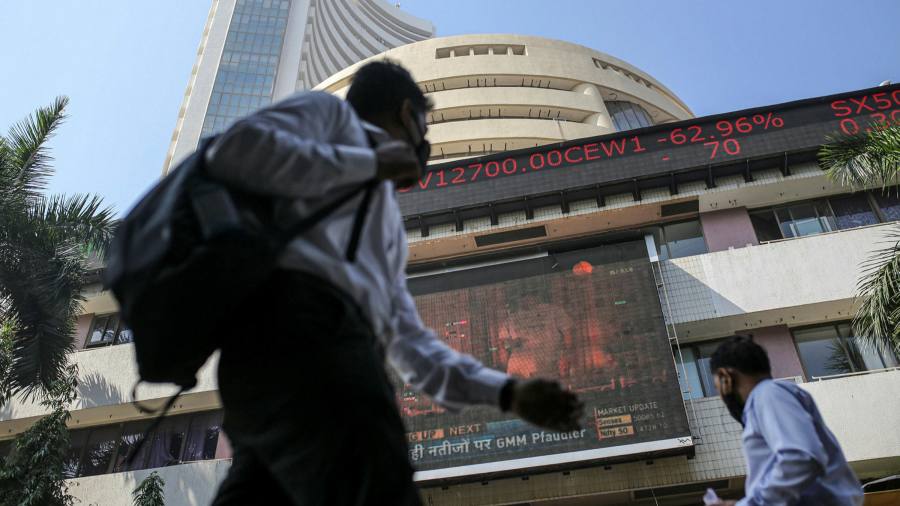[ad_1]
The writer, a former governor of Reserve Bank of India, is author of ‘Overdraft: Saving the Indian Saver’
India’s economy is experiencing the worst contraction in decades as a result of coronavirus. But even if the threat of the virus fades, India’s medium-term growth prospects will be hindered by two policy reversals that predate the pandemic. Both have systemic consequences.
The first is a return to high tariffs — an external-facing move that will hit productivity. The second is the undermining of the 2016 bankruptcy code — an internal policy that will lead to inefficient allocation of credit.
Over the past four years, the Indian government’s use of higher tariffs has intensified, in a policy that is unmistakably reminiscent of the 1970s. Decades of bipartisan support that enabled previous administrations to cut India’s customs duties on non-agricultural goods to 10 per cent have been cast aside. And a quarter of a century of respectable export growth has been discounted without debate.Â
While the government explicitly favours protectionism, the opposition parties implicitly support it by staying silent. They don’t see any upside to defending an open trading regime.Â
The outcomes of insular trade policies are well known from India’s chequered past — higher prices, inferior goods, low productivity and self-fulfilling export pessimism — which leads to lobbying for further protection. Somewhat contradictorily, since 2019, India’s capital account has been liberalised further for external finance, including the short-term volatile category. Together, this adds up to an incongruous economic policy.
A little discussed potential outcome is that other countries will push back against Indian services exports — an area where the country has exhibited durable comparative advantage. The days of “heads I win, tails you lose†in trade relations are ending. It is not inconceivable that some nations might retaliate with taxes on providing cross-border IT solutions.
The second policy error is the dilution, by the government and the banking regulator, of the 2016 Insolvency and Bankruptcy Code framework and associated regulations. Sound rules-based, time-bound resolution is out. Discretion is now in — and transparency has been compromised.
The definition of what constitutes a default was diluted in 2019, allowing delinquent borrowers to prolong matters. Exposure limits for large borrowers, intended to mitigate concentration risk, were also relaxed. Ad hoc regulatory dispensation for specific sectors has made a comeback, too.
There are many reasons why Indian politicians are wary of supporting markets-based approaches. There is a lack of trust between rulers and the ruled. The suspicion that the system is rigged has remained hard to bridge, even though India’s growth and outward focus since 1991 have lifted hundreds of millions out of poverty.Â
This perception is difficult to counter in opaque credit markets, where crony capitalism has played for decades. A transparent and rules-based IBC was a chance to make clear that defaulters could no longer hide in a discretion-heavy regulatory and legal maze. The code meant there was a credible threat that sponsors could lose businesses if they did not pay creditors on time.
The insolvency framework also rebalanced class interests, which should have been a plus with voters, and improved capital allocation.
Regrettably the government has chosen to weaken perhaps the most important structural reform of the past two decades. Now, lenders, especially government-owned banks, can once again allow recalcitrant borrowers to game the system and owners to maintain control of “zombie†businesses. Regulations are at the mercy of weak lenders and shaky borrowers.
At present, the banks’ reporting of fresh non-performing assets is virtually at a standstill, due to Covid-induced forbearance. The insolvency code has been suspended since the second quarter of 2020. Rather inexplicably, not even borrowers can initiate a resolution process to salvage value from failing businesses. But while accurate, consistent disclosure of balance sheets is under a cloud, heightened banking sector risk premia are inevitable.
Procrastination in fully addressing financial sector challenges had been contributing to a slowdown in India’s growth in gross domestic product before the pandemic: it was down to 3.1 per cent year on year in the first quarter of 2020. Efficient financing of investment requires that credit be allocated and priced commensurate with risk-adjusted returns. Further delays in the unclogging of credit plumbing will have more severe consequences.
[ad_2]
Source link






